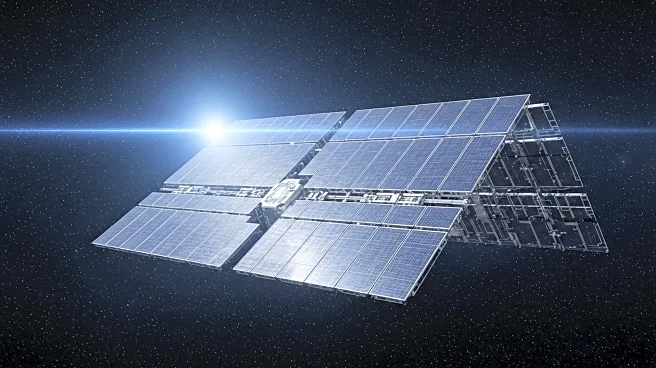What is the story about?
What's Happening?
NASA is focusing on cutting costs and complexity in its space missions through advancements in space solar technology. The agency is collaborating with Ascent Solar Technologies to develop distributed space power infrastructure using CIGS thin film solar modules. This technology aims to beam power from one point in space to another, potentially lowering the cost and risk of NASA missions. The initiative is part of NASA's broader Lunar program goals, including the Artemis Moon mission and scientific research programs.
Why It's Important?
The development of space solar technology could revolutionize how energy is harnessed and utilized in space missions. By reducing the mass and volume required for solar arrays, NASA can potentially lower mission costs and increase efficiency. This advancement supports NASA's goal of achieving more with limited resources, which is crucial given budget constraints. The technology also has implications for future space-to-Earth applications, although significant challenges remain.
What's Next?
NASA's collaboration with Ascent Solar Technologies is expected to result in commercial products for distributed space power infrastructure within 12 months. The success of this project could pave the way for more cost-effective space missions and expand the possibilities for space exploration. Stakeholders in the space industry will likely watch the project's progress closely, as it could influence future investments and technological developments.
Beyond the Headlines
The initiative highlights the potential for space solar technology to impact not only space missions but also Earth-based applications. As the technology matures, it could lead to new opportunities for commercial space ventures and energy solutions. The collaboration also underscores the importance of public-private partnerships in advancing space technology.
AI Generated Content
Do you find this article useful?

















